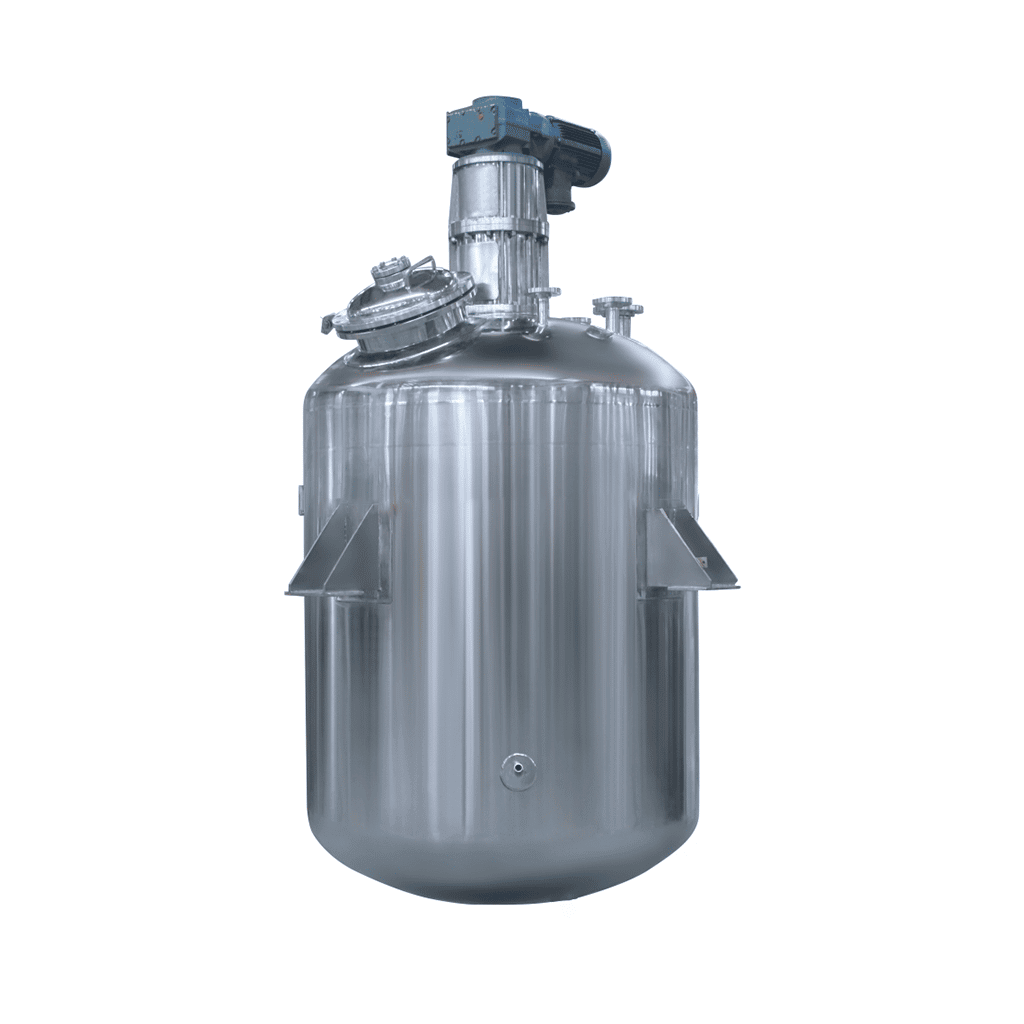
-24-1.jpg)
Stainless Steel Reactor
Stainless Steel Reactor: used in dairy products, sugar, beverages, and other fields
Material
stainless steel (316, 304)
Capacity (L)
10-10000+
Mixing system
anchor, paddle, frame and others
Heating system
electric heating, oil heating and others
A stainless steel reactor is a stainless steel container equipment. The stainless steel reactor consists of a kettle body, a kettle lid, a stirrer, a jacket, a bracket, a transmission device, a shaft seal device, etc. Materials and openings can be made according to user needs and process requirements. Stainless steel reactors are mainly used for stirring, homogenizing, and mixing storage of dairy products, sugar, beverages, food, and various pharmaceuticals.
Request a quoteThe production process and structural design of the stainless steel hydrogenation reactor are the tense factors for function and quality assurance. Different structural designs of the hydrogenation reactor are different in the working process, so when we choose stainless steel hydrogenation reactor products, we must For the analysis of these influential conditions, it is also necessary to determine the needs of different structures. Guarantee the maximization of production efficiency. In addition, the production process of the stainless steel hydrogenation reactor will also have different transformation conditions.

The equipment configuration mainly involved in glue production is as follows: stainless steel hydrogenation reactor, polymerization reactor, emulsification reactor, pre-dissolution reactor, potassium persulfate solution storage tank, polyvinyl alcohol storage tank, vinyl acetate storage tank, and distilled water storage tank. Among them, the stainless steel hydrogenation reactor is the most important equipment in glue production. Generally speaking, the production cycle of white latex is 24 hours. Therefore, the volume of the stainless steel hydrogenation reactor should be calculated based on the annual output required by the user. Its design temperature is 150 degrees, and the heating method is mostly jacketed steam heating.
Glue is a water-soluble adhesive with a wide range of uses and a large amount of. Generally, it is mainly a thermoplastic adhesive obtained by the polymerization of vinyl acetate monomer under the action of an initiator. Because it has the characteristics of room temperature curing, fast curing, and high bonding strength, the bonding layer has good toughness and durability and is not easy to age. It is widely used in wood, furniture, decoration, printing, textiles, leather, paper, etc. It is one of the most widely used adhesives in the industry.
Since the viscosity of the reactants during polymerization is not high, the stirring paddles of the stainless steel hydrogenation reactor are flat paddles or upper and lower blade paddles. The stirring speed is about 125r/min, and it is equipped with a reducer.
There are certain requirements for welding process improvement and maintenance of stainless steel hydrogenation reactors and reboilers. Chlorinated benzene is a kind of strong organic solvent. As a central body, it has a wide range of applications in the fields of medicine, dyes, pesticides, and engineering plastics. During the daily use of reboilers and stainless steel hydrogenation reactors, pipeline blockage often occurs. The main components of blockage are salts, alkali, and carbides.
When the reboiler is clogged, methods of increasing gas consumption are usually used to ensure product output and product qualification rate. Increasing gas consumption (increased energy consumption) will cause the material to be heated to carbonization, further clogging the pipes, and the material will be thermally decomposed to produce chloride ions and hydrogen ions (which will cause greater corrosion to stainless steel heat exchangers and stainless steel hydrogenation reactors), leading to equipment corrosion. Faster. Therefore, regular cleaning and maintenance of the reboiler and stainless steel hydrogenation reactor can not only save energy but also reduce the corrosion rate of the equipment and increase the service life of the equipment.
Therefore, different structural designs and welding processes in the production of stainless steel hydrogenation reactors have different impacts on operating conditions. The improvement of performance can make the stainless steel hydrogenation reactor have a good working effect during operation and improve the internal chemical reaction. Correct control enables the effects and benefits to be well controlled in production.




